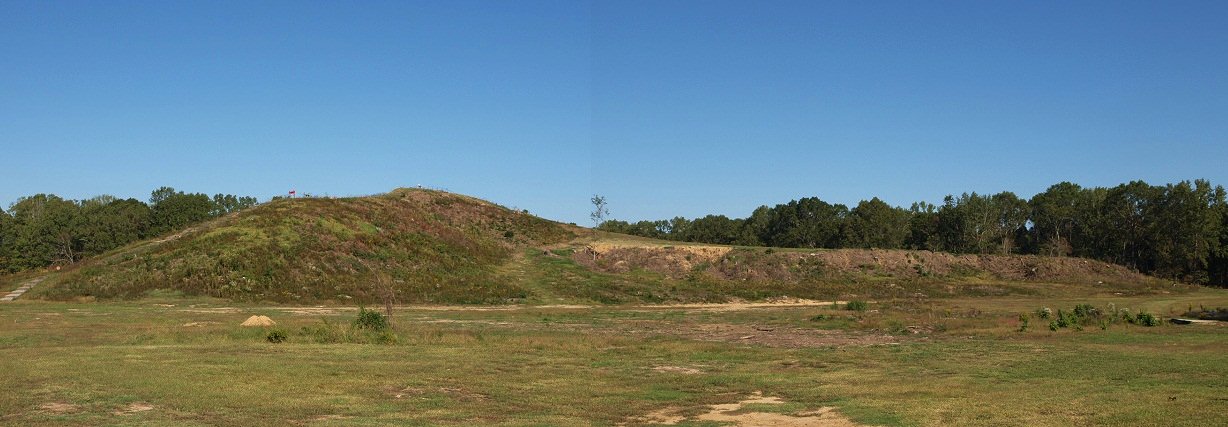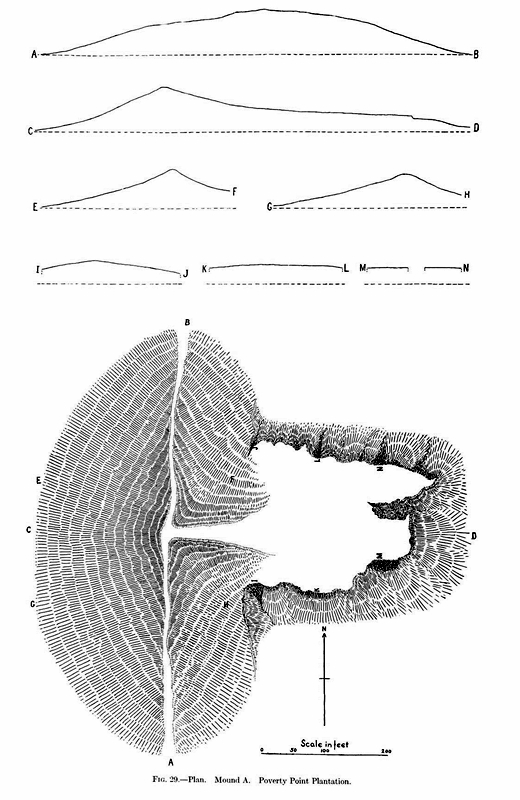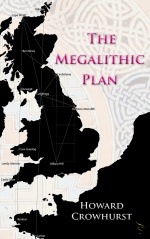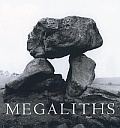<< Our Photo Pages >> Poverty Point - Mound A - Artificial Mound in United States in The South
Submitted by bat400 on Tuesday, 29 January 2013 Page Views: 10030
Pre-ColumbianSite Name: Poverty Point - Mound ACountry: United States Region: The South Type: Artificial Mound
Nearest Town: Vicksburg, MS Nearest Village: Epps, Louisiana
Latitude: 32.635300N Longitude: 91.4108W
Condition:
| 5 | Perfect |
| 4 | Almost Perfect |
| 3 | Reasonable but with some damage |
| 2 | Ruined but still recognisable as an ancient site |
| 1 | Pretty much destroyed, possibly visible as crop marks |
| 0 | No data. |
| -1 | Completely destroyed |
| 5 | Superb |
| 4 | Good |
| 3 | Ordinary |
| 2 | Not Good |
| 1 | Awful |
| 0 | No data. |
| 5 | Can be driven to, probably with disabled access |
| 4 | Short walk on a footpath |
| 3 | Requiring a bit more of a walk |
| 2 | A long walk |
| 1 | In the middle of nowhere, a nightmare to find |
| 0 | No data. |
| 5 | co-ordinates taken by GPS or official recorded co-ordinates |
| 4 | co-ordinates scaled from a detailed map |
| 3 | co-ordinates scaled from a bad map |
| 2 | co-ordinates of the nearest village |
| 1 | co-ordinates of the nearest town |
| 0 | no data |
Internal Links:
External Links:
I have visited· I would like to visit
bat400 has visited here

Mound A is the largest mound at Poverty Point and it's been suggested that the mound was intentionally shaped like a flying bird. The Poverty Point earthworks are among the very oldest in North America, but Mound A construction occured at the end of construction of other earthworks at the site. It is the largest of the mounds and was built in one season and dated to ~1250 BC. At that time, it would have been the largest earthwork in the western hemisphere.
It is 70 feet high, 640 feet along the "wing" and 710 feet from head to tail. The "head" of the bird was badly damaged by "treasure" hunters in the early 1900's before the site was under protection. For many years trees had been allowed to grow on the mound, but these have recently been removed as the fully grown trees were starting to fall naturally and damage the structure as they were uprooted. (In 2011 this gave the mound a "skinned" appearance which will improve as grasses grow more thickly on the surface.)
Information Sources:
* Poverty Point - A terminal Archaic Culture of the Lower Mississippi Valley, Jon L. Gibson, 1996.
* Northeast Louisiana Mound Trail guide.
Note: Publication of findings from last major excavations. Dates and estimates of construction man-hours. See comments.
You may be viewing yesterday's version of this page. To see the most up to date information please register for a free account.


Do not use the above information on other web sites or publications without permission of the contributor.
Nearby Images from Flickr






The above images may not be of the site on this page, but were taken nearby. They are loaded from Flickr so please click on them for image credits.
Click here to see more info for this site
Nearby sites
Click here to view sites on an interactive map of the areaKey: Red: member's photo, Blue: 3rd party photo, Yellow: other image, Green: no photo - please go there and take one, Grey: site destroyed
Download sites to:
KML (Google Earth)
GPX (GPS waypoints)
CSV (Garmin/Navman)
CSV (Excel)
To unlock full downloads you need to sign up as a Contributory Member. Otherwise downloads are limited to 50 sites.
Turn off the page maps and other distractions
Nearby sites listing. In the following links * = Image available
550m E 79° Poverty Point - Earthworks* Ancient Village or Settlement
550m E 81° Poverty Point* Ancient Village or Settlement
2.8km S 180° Lower Jackson* Artificial Mound
8.1km N 9° Mott Archaeological Preserve Artificial Mound
18.3km SSW 204° Marsden Mounds* Artificial Mound
19.1km ENE 72° Julice Mound Artificial Mound
20.4km ENE 74° Transylvania Mound* Artificial Mound
22.9km S 170° Tendal Mound* Artificial Mound
28.3km SSW 193° Insley Mounds* Artificial Mound
33.2km SE 142° Schicker Mound Artificial Mound
33.9km W 268° Jordan Mounds Site Artificial Mound
41.5km NNE 17° Galloway Place Mound Artificial Mound
45.1km NW 311° Venable Mound Artificial Mound
46.1km NW 313° Caney Bayou Mound Artificial Mound
46.7km SE 138° Fitzhugh Mounds* Artificial Mound
48.6km ENE 67° Cary Mounds* Artificial Mound
53.8km E 90° Aden Mounds* Artificial Mound
54.8km S 169° Shackleford Church Mounds Artificial Mound
57.0km NE 46° Grace Mounds Artificial Mound
57.6km ENE 60° Rolling Fork Mounds* Artificial Mound
58.2km SSE 164° Balmoral Mounds* Artificial Mound
58.2km ESE 116° Kings Crossing Mounds* Artificial Mound
60.4km ESE 102° Haynes Bluff Mounds* Artificial Mound
60.4km S 184° Ghost Site Mounds Artificial Mound
61.1km NE 56° Mont Helena* Artificial Mound
View more nearby sites and additional images






 We would like to know more about this location. Please feel free to add a brief description and any relevant information in your own language.
We would like to know more about this location. Please feel free to add a brief description and any relevant information in your own language. Wir möchten mehr über diese Stätte erfahren. Bitte zögern Sie nicht, eine kurze Beschreibung und relevante Informationen in Deutsch hinzuzufügen.
Wir möchten mehr über diese Stätte erfahren. Bitte zögern Sie nicht, eine kurze Beschreibung und relevante Informationen in Deutsch hinzuzufügen. Nous aimerions en savoir encore un peu sur les lieux. S'il vous plaît n'hesitez pas à ajouter une courte description et tous les renseignements pertinents dans votre propre langue.
Nous aimerions en savoir encore un peu sur les lieux. S'il vous plaît n'hesitez pas à ajouter une courte description et tous les renseignements pertinents dans votre propre langue. Quisieramos informarnos un poco más de las lugares. No dude en añadir una breve descripción y otros datos relevantes en su propio idioma.
Quisieramos informarnos un poco más de las lugares. No dude en añadir una breve descripción y otros datos relevantes en su propio idioma.